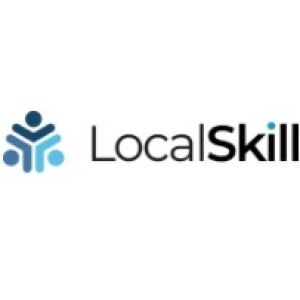Effective On-boarding for IT Professionals: Best Practices for a Smooth TransitionPosted by Local Skill on May 29th, 2024 Bringing new IT professionals on board is a crucial process that can significantly impact their productivity, job satisfaction, and long-term retention. A well-structured on-boarding process ensures that new hires feel welcomed, informed, and prepared to contribute to their teams quickly. As an IT recruitment agency, your role extends beyond finding the right talent to ensuring they integrate seamlessly into their new roles. In this blog, we’ll explore best practices for effective on-boarding of IT professionals. 1. Pre-On-boarding Preparation Why It Matters: Preparing for a new hire's arrival ensures a smooth start. It shows that the company is organized and values the new employee's time and effort. Best Practices: ● Set Up Workstations: Ensure that all necessary hardware and software are ready. This includes setting up laptops, access credentials, email accounts, and required software installations. ● Prepare Documentation: Gather all relevant documents, such as company policies, project details, and role-specific information, and share them with the new hire before their first day. ● Assign a Buddy: Pair the new hire with a seasoned team member who can help them navigate the initial days and provide a friendly point of contact for questions. 2. Structured Orientation Program Why It Matters: A well-organized orientation program helps new hires understand the company's culture, values, and expectations, setting the tone for their experience. Best Practices: ● Welcome Meeting: Schedule a meeting with key team members and leaders to introduce the new hire and provide an overview of the company. ● Company Culture: Present the company’s mission, vision, and values. Highlight the organizational culture and what makes it unique. ● Department Overviews: Arrange short sessions with different departments to give the new hire a comprehensive understanding of how the company operates and how their role fits into the bigger picture. 3. Role-Specific Training Why It Matters: IT roles often require specialized knowledge and skills. Providing role-specific training ensures that new hires can perform their duties effectively. Best Practices: ● Technical Training: Offer training on the specific tools, technologies, and platforms that the new hire will be using. This can include coding standards, software development methodologies, and system architectures. ● Project Overviews: Provide detailed information about current projects, their goals, and the new hire’s expected contributions. ● Hands-On Learning: Allow new hires to work on small, manageable tasks initially to build their confidence and understanding of the role. 4. Clear Communication Channels Why It Matters: Clear and open communication channels help new hires feel supported and connected, reducing feelings of isolation and confusion. Best Practices: ● Regular Check-Ins: Schedule regular check-ins with the new hire’s manager to discuss progress, address concerns, and provide feedback. ● Team Meetings: Include the new hire in team meetings to foster a sense of belonging and keep them informed about ongoing projects and team dynamics. ● Feedback Mechanisms: Establish a system for new hires to provide feedback on their on-boarding experience and any challenges they are facing. 5. Setting Clear Expectations and Goals Why It Matters: Setting clear expectations and goals helps new hires understand what is expected of them and how they can succeed in their roles. Best Practices: ● Define Objectives: Clearly outline the key responsibilities and performance expectations for the new hire’s role. ● Short-Term Goals: Set achievable short-term goals to provide a sense of accomplishment and direction. ● Long-Term Vision: Discuss long-term career development opportunities and how the new hire can grow within the company. 6. Continuous Support and Integration Why It Matters: Continuous support helps new hires integrate fully into their teams and the company, fostering long-term engagement and productivity. Best Practices: ● Ongoing Training: Provide opportunities for continuous learning and professional development. This could include advanced training sessions, workshops, and access to online courses. ● Mentorship Programs: Establish mentorship programs where new hires can receive guidance and support from experienced colleagues. ● Social Integration: Encourage participation in social events and team-building activities to help new hires build relationships with their colleagues. Conclusion Effective on-boarding is a critical process that sets the stage for a new hire’s success in an IT role. By implementing these best practices, IT recruitment agencies can ensure that new professionals feel welcomed, prepared, and supported as they transition into their new positions. A well-structured on-boarding process not only enhances productivity and job satisfaction but also contributes to higher retention rates. Like it? Share it!More by this author |


